Many NFL greats have been trapped on bad teams at select points. Other players who are not in the Hall of Fame or on Canton paths have excelled for teams that bottomed out. Setting the bar at three or fewer wins in the modern era and two between the AFL-NFL merger and the expansion to 16 games, here are the best seasons from players on terrible squads.
1 of 25
Joe Thomas, Cleveland Browns (2015)
Robin Alam/Icon Sportswire
Multiple Thomas seasons would qualify here, as the Hall of Famer regularly delivered top-shelf work for no-hope Browns teams. Thomas displayed an interesting affinity for Cleveland, being the rare modern player to go wire-to-wire on a bad team. The 2015 season brought a chance to exit, with the Broncos pursuing him in an in-season trade. Nothing transpired, and while Thomas would have been a big upgrade for the eventual champs, he delivered his sixth and final first-team All-Pro showing for the Browns. The 10-time Pro Bowl left tackle played every snap, per usual, but the Browns — who started three QBs, including a freefalling Johnny Manziel — went 3-13.
2 of 25
Lavonte David, Tampa Bay Buccaneers (2014)
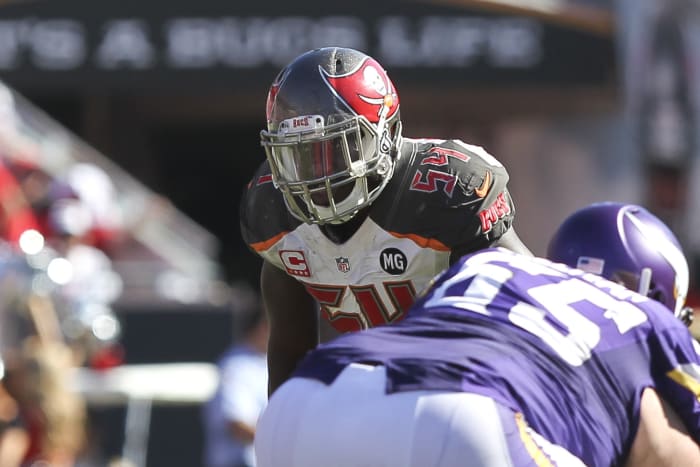
Mark LoMoglio/Icon Sportswire
By most measurements, David has been one of this era’s best linebackers. The 13-year veteran is light on Pro Bowls due largely to the all-star game’s selection format overlooking 4-3 outside linebackers — David’s position before Todd Bowles’ 2019 arrival. David delivered one of his best seasons in his third year, though it did not save a Buccaneers team that went 2-14 en route to the Jameis Winston draft slot. David missed two games but still led all off-ball linebackers with 17 tackles for loss. In terms of tackles per game, this was David’s finest hour, as he totaled 146. The former second-rounder also forced four fumbles, securing an extension in 2015.
3 of 25
Andre Johnson, Houston Texans (2013)
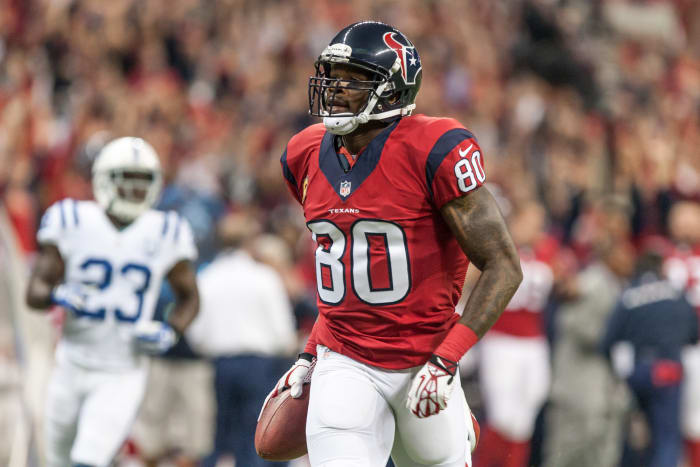
Juan DeLeon/Icon Sportswire
A Hall of Famer and perhaps two future Canton inductees — depending on DeAndre Hopkins’ status — toiled for a 2013 Houston team that faceplanted following back-to-back playoff appearances. Johnson had spent his career waiting for those postseason cameos, having not made the playoffs until his ninth season. The 2003 first-round pick remained in top form for Matt Schaub, but this was his final strong season. Johnson posted a 1,407-yard campaign (with five touchdowns), venturing to his seventh and final Pro Bowl. Johnson finished his career with two other AFC South teams — the Colts and Titans — to close his career.
4 of 25
J.J. Watt, Houston Texans (2013)

Zach Bolinger/Icon Sportswire
This season brought a line of demarcation for the Texans, who won their first two games and lost their final 14. Houston fired eighth-year coach Gary Kubiak in-season and benched Matt Schaub, the team’s starter since 2007. Schaub never returned to a starting role. While this season dropped the Texans from a 12-4 team and ushered in QB uncertainty, Watt showed his 2012 emergence was no fluke. Luke Kuechly (and the Texans’ 2-14 record) prevented Watt from a Defensive Player of the Year four-peat, but the electric D-lineman finished with 10.5 sacks and four forced fumbles. He also totaled 46 QB hits, outpacing his number from the transcendent 2012 season.
5 of 25
Jamaal Charles, Kansas City Chiefs (2012)

Jeff Moffett/Icon Sportswire
Romeo Crennel’s one-and-done infamously featured six Pro Bowlers and two wins. The 2011 Kansas City interim coach was not asked back in 2013. Charles was, as he zoomed to a 1,509-yard rushing season behind a shaky offensive line. The Chiefs fed their top player often, but the yards-per-carry maven still averaged 5.3 per tote and collected second-team All-Pro acclaim. Charles completed this effort despite coming back from a 2011 ACL tear. The fifth-year speedster only scored six touchdowns, highlighting the Chiefs’ plight during a season in which fans cheered when starting QB Matt Cassel suffered an injury. Charles began working with Alex Smith in 2013.
6 of 25
Jared Allen, Minnesota Vikings (2011)

Zuma Press/Icon Sportswire
Traded to the Vikings in a 2008 deal that sent Charles (via third-round pick) and tackle Branden Albert to the Chiefs, Allen made it a win-win swap. Allen delivered Hall of Fame-level work in Minnesota, peaking for a Vikings team that went 3-13. The former Chiefs starter made a run at Michael Strahan’s sack record, finishing with 22. Allen closed the show with a 3.5-sack performance against the Bears in Week 17. This marked the veteran edge rusher’s fourth and final first-team All-Pro season. He played two more in Minnesota, before finishing his career as part of the 2015 NFC champion Panthers.
7 of 25
Steven Jackson, St. Louis Rams (2009)

Icon Sportswire
One of the reasons the Chiefs have forged a dynasty: Steve Spagnuolo’s terrible Rams stint will prevent him from landing a head coaching job again. The acclaimed defensive coordinator submitted a 2-14 season and a 1-15 campaign in a three-year St. Louis stay. Jackson was a Ram throughout the Spags era, rushing for 1,416 yards (second only to Chris Johnson that year). Jackson only scored four touchdowns for a team that went 1-15. Jackson managed 1,000-yard years on three teams that finished with two or fewer wins, with the talented RB’s prime coming during a 12-year Rams playoff drought.
8 of 25
Tony Gonzalez, Kansas City Chiefs (2008)
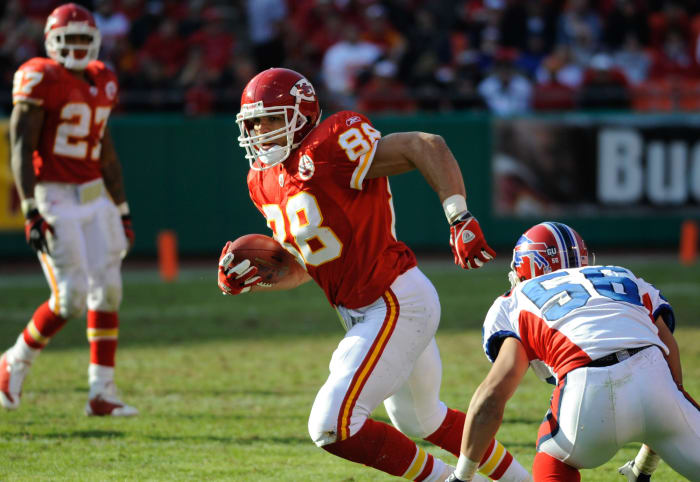
KENNY FELT/Icon Sportswire
Between Dick Vermeil and Andy Reid’s stays, the Chiefs became a doormat. This led to a regime change, ushering in the regrettable Scott Pioli period, and a Gonzalez trade to Atlanta. A year before that swap, however, the all-time great powered a terrible Kansas City offense. Trapped without a QB plan, Herm Edwards’ team used Tyler Thigpen — a 2007 seventh-round pick — as its primary passer. This led to some entertaining outings — albeit in a 2-14 season — and more Gonzalez dominance. The 12th-year tight end earned the fifth of his six first-team All-Pro honors by totaling 1,058 yards and 10 TDs. It took the Chiefs all of five years to find another elite tight end.
9 of 25
Calvin Johnson, Detroit Lions (2008)
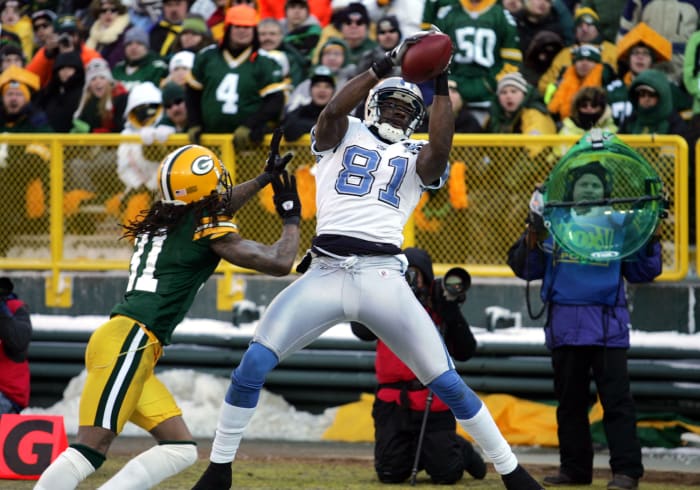
Allen Fredrickson/Icon Sportswire
Showing Johnson’s potential and highlighting how a great receiver can still fail to solve macro problems for a franchise, Johnson’s second season could not prevent one of the worst team showings in NFL history. The Lions became the first team to go 0-16, but the 2007 No. 2 overall pick still led the league with 12 TD catches while helping a cadre of overmatched quarterbacks with 1,331 receiving yards. The Jon Kitna-Daunte Culpepper-Dan Orlovsky trio did well to keep Johnson from a Pro Bowl nod; Megatron’s first such honor did not come until 2010. After Charles Rogers, Roy Williams and Mike Williams did not pan out, Matt Millen finally hit on a receiver late in a doomed GM tenure.
10 of 25
Rodney Harrison, San Diego Chargers (2000)
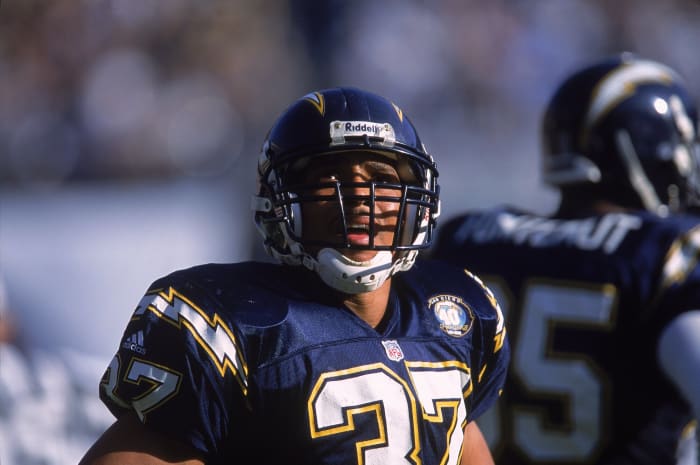
Stephen Dunn/Allsport/Getty Images
Before relocating to New England, Harrison enjoyed a lengthy prime in San Diego. His reputation as a dirty player formed in Southern California, but the 2000 season brought a versatile performance that went unrecognized due partially to the Bolts’ 1-15 season. Harrison’s seventh season brought a rare six-INT, six-sack stat line, with the menacing safety turning one of those picks into a touchdown. Stuffing box scores for a team that needed to defend the run more often than most, Harrison added a team-high 127 tackles (10 for loss). Harrison became a Chargers cap casualty three years later, leaving for the Patriots.
11 of 25
Junior Seau, San Diego Chargers (2000)

Owen C. Shaw/Getty Images
After sustained success under Bobby Ross, the Chargers trended downward in the late 1990s and bottomed out in 2000. This period came despite Seau continuing to thrive as a versatile linebacker. Operating as an outside ‘backer, Seau was a constant presence in opponents’ backfields. He totaled 103 tackles (15 for loss) and 3.5 sacks for a 1-15 Bolts team. This marked Seau’s sixth and final first-team All-Pro season, though the eventual 20-year veteran added more Pro Bowls to his count after this standout season. Seau played two more Chargers seasons before being traded to the Dolphins.
12 of 25
Marshall Faulk, Indianapolis Colts (1998)

George Gojkovich/Getty Images
The Colts did quite well with Edgerrin James complementing Peyton Manning, but the 1998 season created a fun “what if?” involving a slightly more talented running back. Faulk and Manning overlapped for one season, a 3-13 campaign that involved Manning setting a rookie-year record with 28 INTs. Faulk did his best to help the No. 1 overall pick, nearly producing a 1,000-1,000 season. Falling 92 yards short of 1,000 through the air, the future MVP led the league with 2,227 from scrimmage. Faulk scored 10 TDs, providing the Rams a final push to send the Colts second- and fifth-round picks for the future Hall of Famer in 1999.
13 of 25
Henry Ellard, Washington (1994)
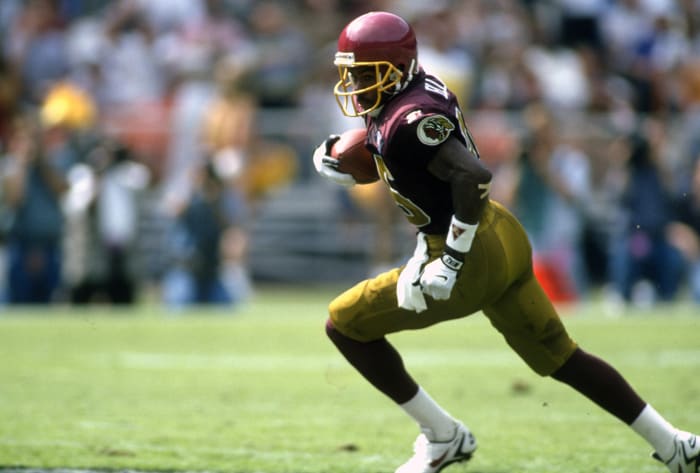
Focus on Sport/Getty Images
Falling short of Hall of Fame entry, Ellard is certainly deserving of the Hall of Very Good. After a strong Rams tenure, the enduring speedster did well to cement himself as one of his era’s best receivers by posting three straight 1,000-yard seasons in Washington in his mid-30s. Signing with Washington in 1994, Ellard was set to help first-rounder Heath Shuler develop. As it turned out, seventh-rounder Gus Frerotte was the better option. The rookies (and journeyman John Friesz) continually found Ellard, whose 1,397 yards (18.9 per catch) trailed only Jerry Rice that season. At 33, Ellard delivered his second-best receiving total — for a 3-13 team in Norv Turner’s debut.
14 of 25
Ken Harvey, Washington (1994)
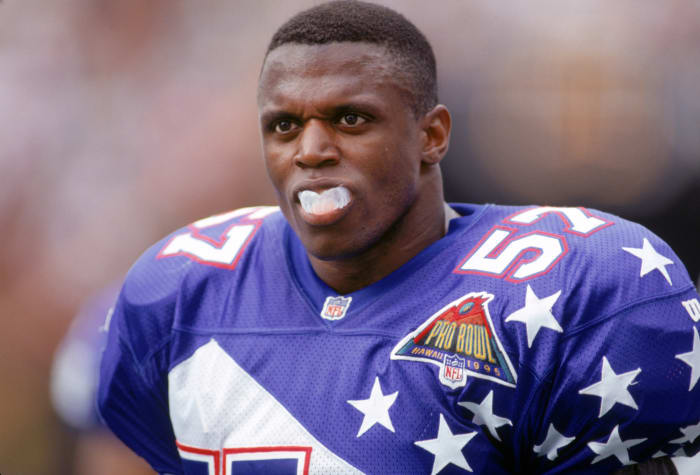
George Rose/Getty Images
Joining Ellard in a strong free-agent class, Harvey made an immediate impact on a team with bigger problems. The former Cardinals linebacker checked off edge rusher from that list, racking up a career-high 13.5 sacks in his Washington debut. Harvey earned second-team All-Pro honors and went to the first of his four Pro Bowls with the team. Only Kevin Greene bettered Harvey’s sack total, and the six-year Cardinal’s four forced fumbles ranked in a tie for second league-wide. Harvey also rewarded his second NFL franchise with a second-team All-Pro season in 1995, but he wrapped his career 0-for-11 in playoff berths.
15 of 25
Cortez Kennedy, Seattle Seahawks (1992)
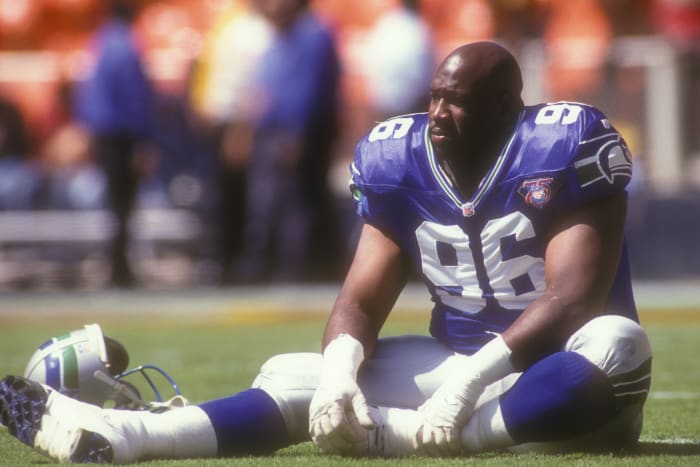
Mitchell Layton/Getty Images
Easily the most productive season of Kennedy’s career, his third NFL campaign was his most memorable due to an offseason change. Jerome Brown’s tragic death that offseason from a car accident prompted Kennedy to change his number to 99 to honor his former Miami Hurricanes teammate. The Seahawks floundered to a 2-14 record in Tom Flores’ first season coaching the team, but it did not stop Kennedy from earning Defensive Player of the Year acclaim. The 1990 first-rounder reeled off 14 sacks — far and away a career-high — and four forced fumbles. Even though the Seahawks rarely contended during Kennedy’s time, this season put the D-tackle on a Canton course.
16 of 25
Michael Dean Perry, Cleveland Browns (1990)

Rick Stewart/Getty Images
After the Browns ventured to the 1989 AFC championship game — losing a non-“The” game to the Broncos — Bud Carson’s coaching tenure brought a significant step back in 1990. The team started 2-7 and fired its second-year HC, finishing 3-13. One of the top players from the ’89 AFC runner-up, Perry remained in top form. The more productive (albeit less famous) of the DT Perry brothers tallied a career-high 11.5 sacks and forced two fumbles en route to first-team All-Pro honors. The Browns defense still ranked last in points allowed, but Perry did his part. Despite only playing seven seasons with the team, Perry held the pre-Myles Garrett team record with 51.5 official sacks.
17 of 25
Herschel Walker, Dallas Cowboys (1988)
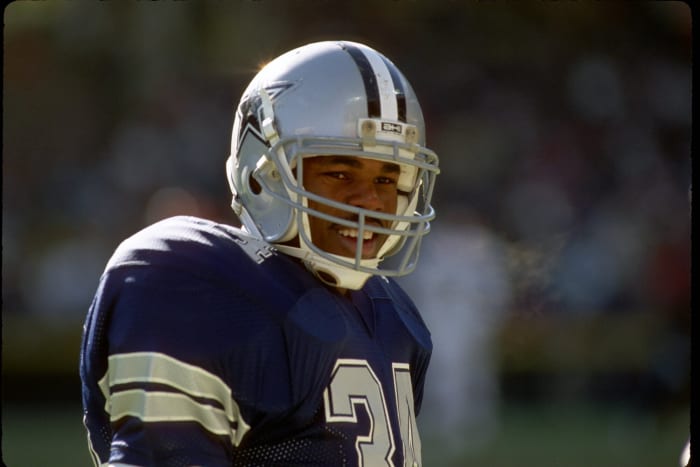
George Gojkovich/Getty Images
None of these seasons meant more to one team’s future than Walker’s showing in Tom Landry’s finale. The size-speed dynamo, in Year 3 with the Cowboys after the USFL’s infamous collapse, Walker was by far the Cowboys’ best player. He reached a career-best 1,514 rushing yards and surpassed 2,000 from scrimmage. Totaling only seven touchdowns, Walker still secured second-team All-Pro acclaim. This season brought a 3-13 record, and new owner Jerry Jones soon denied Landry a 30th season at the helm. The Cowboys drafted Troy Aikman in 1989 and dealt Walker to the Vikings for a preposterous trove of assets, putting pieces in place for the team’s Jimmy Johnson-led dynasty.
18 of 25
Lawrence Taylor, New York Giants (1983)

George Gojkovich/Getty Images
Bill Parcells soon turned Taylor’s presence into a run that included two Super Bowl titles, but the elevated defensive coordinator’s first Giants HC season ended with a 3-12-1 record. The rookie coach, with Bill Belichick in charge of the linebackers, saw Taylor pick up his third straight first-team All-Pro nod. Although Taylor was only credited with 9.5 sacks, his early-career performances changed how teams utilized and blocked edge rushers. This season, however, featured zero Phil Simms starts. The fifth-year QB’s crossroads campaign hurt the Giants, who started Scott Brunner for most of the season. Simms joined Taylor in boosting the Giants’ fortunes soon after.
19 of 25
John Hannah, New England Patriots (1981)

George Gojkovich/Getty Images
An offensive innovator, Ron Erhardt did not have another chance as a head coach following this 2-14 Patriots season. Going on to be Parcells’ offensive coordinator, Erhardt functioned better in that role with New England. Chuck Fairbanks’ HC successor did have an unmatched piece on his offensive front, with Hannah delivering his usual brand of top-notch work at guard. The Hall of Famer’s age-30 season included 16 games and his third first-team All-Pro finish. Hannah, who was part of the 1970s Patriot playoff teams and stuck around through their 1985 AFC championship season, remains arguably the second-best player in team history.
20 of 25
Al Baker, Detroit Lions (1979)

UPI/Bettmann Archive/Getty Images
Baker did not receive his due credit for a generation, with most in the dark on pre-1982 sack numbers. A 2020s unearthing shed light on the elite defensive end, who is unofficially the NFL’s sack kingpin. Baker’s 23-sack slate came as a rookie; a year later, the Lions edge player remained in top form. The second-year talent racked up 16 sacks to earn Pro Bowl acclaim, with Detroit’s 2-14 record undoubtedly affecting his perception regarding another All-Pro distinction. Baker’s total did not pace the NFL, but he returned to that perch in 1980 (with 17.5). Eventually, an NFL nomad, Baker was an indispensable part of the Lions’ Silver Rush defense in his early years.
21 of 25
Lee Roy Selmon, Tampa Bay Buccaneers (1977)
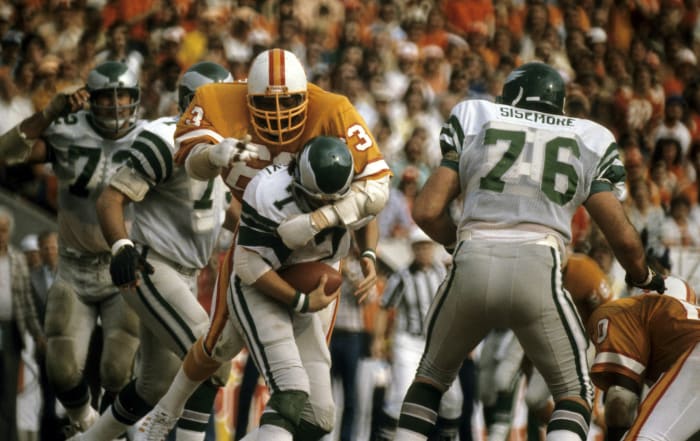
Sylvia Allen/Getty Images
Kyle Brandt’s odd proclamation declaring Mike Evans the greatest Buccaneer was most disrespectful to Derrick Brooks, but Selmon is in that conversation as well. The pass rusher did the most to help drag the Bucs out of their historic losing skid that spanned 26 games. After the expansion team’s 0-14 1976 offering, it lost the first 12 games on its 1977 schedule. Selmon still showed talent that booked him a Canton spot, delivering 13 sacks. That placed seventh in the NFL that year, but it is important to note the Bucs ranked 12th in scoring defense despite their QB cadre combining for three TD passes and 30 INTs. Selmon’s readier defensive mates were battling uphill.
22 of 25
Joe DeLamielleure and O.J. Simpson, Buffalo Bills (1976)

B Bennett/Getty Images
Simpson’s last great season did not power the Bills back to the postseason. A playoff team in 1974 and 8-6 squad in ’75, the Bills tumbled to a 2-12 finish in Simpson’s eighth season. His 1,503-yard showing did not help matters much, but it still paced the NFL — Simpson’s fourth rushing title — in the running back’s penultimate Bills season. Simpson’s 5.2 yards per carry trailed only his 2,000-yard season (1973) and his superior 1975. DeLamielleure’s work, in a first-team All-Pro season for the Hall of Fame guard, provided the biggest boost for Simpson’s production. Joe Ferguson’s back injury cost him seven games, and the Bills went 0-7 without their starting QB.
23 of 25
Elvin Bethea, Houston Oilers (1973)
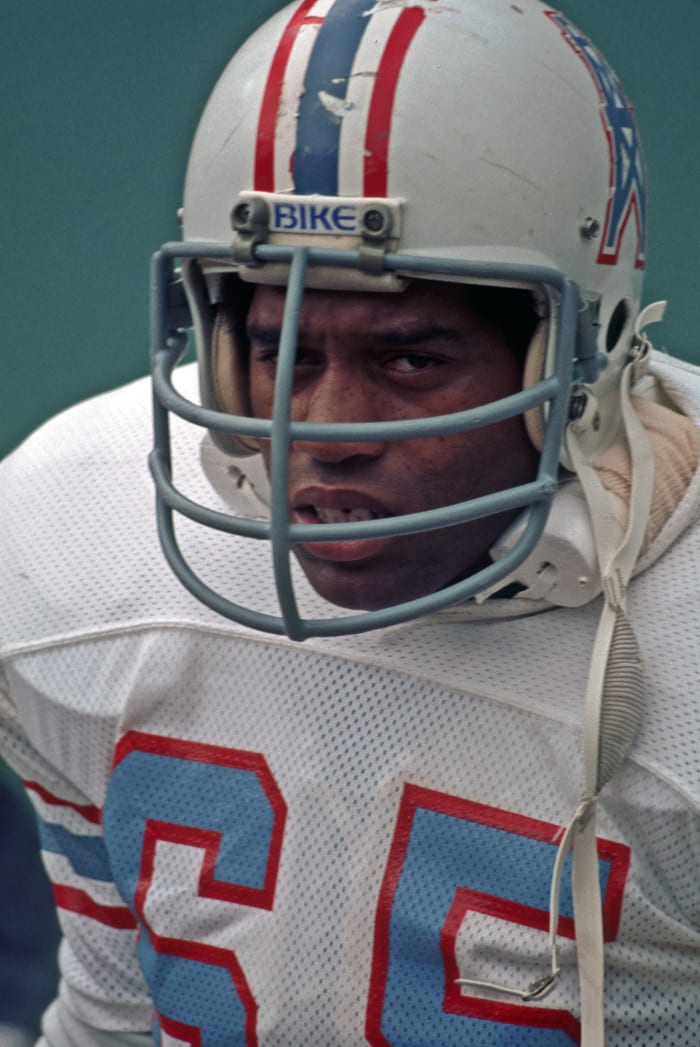
George Gojkovich/Getty Images
Bethea began his career in 1968 and played 16 seasons, helping the Oilers craft a turnaround behind Earl Campbell and three Hall of Fame front-seven pieces. But the franchise faceplanted during his prime. The Houston defensive end’s career-best sack total came in his sixth season, when the team went 1-13 during one of the worst two-year periods in NFL history. Bethea stormed to 16 sacks, doing so despite the Oilers rarely playing with a lead as their Bill Peterson experiment did not take off. Peterson, who had gone 1-13 in 1972, was fired after an 0-5 start. Hall of Famer Sid Gillman still helmed the team to a 1-8 finish despite Bethea and future Hall of Fame safety Ken Houston rostered.
24 of 25
Bill Bradley, Philadelphia Eagles (1972)
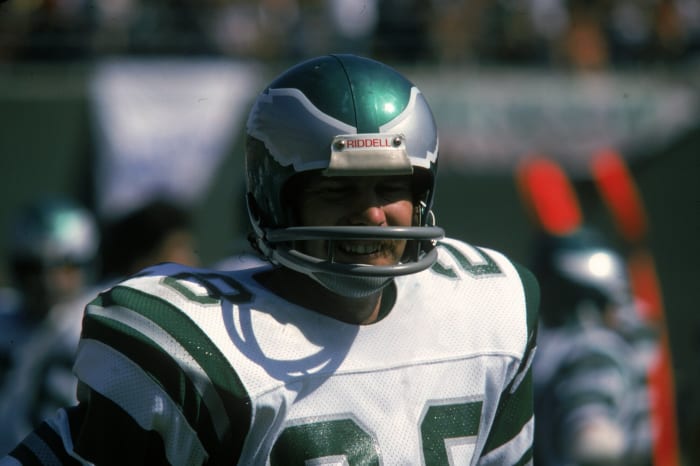
James Flores/Getty Images
This otherwise forgettable Eagles team places two representatives on this list, the first being a three-position player. Bradley served as Philadelphia’s punter and punt returner in 1972, but his All-Pro distinction came from his safety work. Bradley combined for 20 INTs from 1971-72, leading the NFL in picks each season. In the ’72 slate, the fourth-year DB nabbed nine picks and recovered two fumbles for a 2-11-1 Philadelphia outfit. Bradley spent eight seasons with the Eagles, making three Pro Bowls and intercepting 34 passes. The team did not advance to the playoffs during his career.
25 of 25
Harold Jackson, Philadelphia Eagles (1972)

Denny Medley-USA TODAY Sports
One of the best wide receivers not in the Hall of Fame, Jackson is partially punished for spending much of his prime during one of the NFL’s dead-ball eras. Jackson led the league in receiving yards in the 1970s by a massive margin, compiling 7,724 — 1,000-plus more than second place. The other decade receiving leaders since 1960 (Don Maynard, James Lofton, Jerry Rice, Torry Holt, Julio Jones) are enshrined or will be. On a 2-11-1 Eagles team, the shifty playmaker paced the NFL with 1,048 yards en route to second-team All-Pro honors. Jackson, who led the league with 13 TDs after Roman Gabriel’s 1973 arrival, totaled only four scores in ’72.
Sam Robinson is a sportswriter from Kansas City, Missouri. He primarily covers the NFL for Yardbarker. Moving from wildly injury-prone sprinter in the aughts to reporter in the 2010s, Sam set up camp in three time zones covering everything from high school water polo to Division II national championship games. He has since settled in as the husband of a track and field coach, concentrating on the NFL. Boasting an unhealthy interest in the league’s history and fashion trends, Sam is the lead writer for Pro Football Rumors and has written about the sport for Yardbarker since 2018. In addition to working as a writer/editor for a few newspapers – the Cleveland Plain Dealer and St. Joseph (Missouri) News-Press, to name two – in a former life that included some awkward awards-show hosting gigs thankfully inaccessible online, Sam has written about the Olympics for The Athletic.





